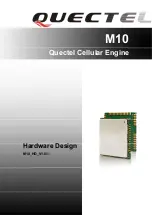
1.4 Safety regulations for maintenance and repair work
Safety regulations when preparing to perform maintenance and repair work
Have maintenance or repair work carried out by qualified and authorized personnel only.
Allow the product to cool down to less than 50 °C (risk of explosion for oil vapors, fluids and lubricants, risk
of burning).
Relieve pressure in fluid and lubricant systems and compressed-air lines which are to be opened. Use suita-
ble containers of adequate capacity to catch fluids and lubricants.
When changing the oil or working on the fuel system, ensure that the service room is adequately ventilated.
Never carry out maintenance and repair work with the product in operation, unless:
• It is expressly permitted to do so following a written procedure.
• The product is running in the low load range and only for as long as absolutely necessary.
Lock-out the product to preclude undesired starting, e.g.
• Start interlock
• Key switch
• With hydraulic starting system: shut off supply line.
Attach “Do not operate” sign in the operating area or to control equipment.
Disconnect the battery cables or actuate the battery isolating switch, if fitted. Lock circuit breakers.
Close the main valve on the compressed-air system and vent the compressed-air line when pneumatic start-
ers are fitted.
Disconnect the control equipment from the product.
Use the recommended special tools or suitable equivalents when instructed to do so.
Elastomer components (e.g. engine mounts, damping elements, couplings and V-belts) must not be painted.
Only install them after painting the engine or mask them prior to painting.
The following applies to starters with copper-beryllium alloy pinions:
• Wear a respirator mask (filter class P3). Do not blow out the interior of the flywheel housing or the starter
with compressed air. Clean the flywheel housing inside with a class H dust extraction device.
• Observe the safety data sheet.
Safety regulations when performing maintenance and repair work
Take special care when removing ventilation or plug screws from the product.
Release residual pressure before removing or replacing a component in the supply line. To depressurize pres-
surized lines, shut off the lines first, then release the residual pressure.
Use only proper and calibrated tools. Observe the specified tightening torques during assembly or disassem-
bly.
Carry out work only on assemblies or plants which are properly secured.
Use appropriate lifting equipment for all components. Use all specified attachment points and observe the
center of gravity.
Never work on engines or components when they are held in place by lifting equipment.
Make sure components or assemblies are placed on stable surfaces. Adopt suitable measures to avoid that
components/tools fall down.
Never use the product as a climbing aid.
When working high on the equipment, always use suitable ladders and work platforms. Special instructions
for outdoor areas: There must be no risk of slipping e.g. due to icing.
Keep fuel injection lines and connections clean.
MS150031/06E 2016-010
| Safety | 11
TIM-ID: 0000040535 - 015












































